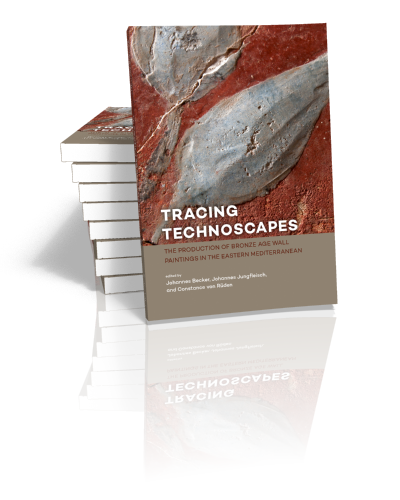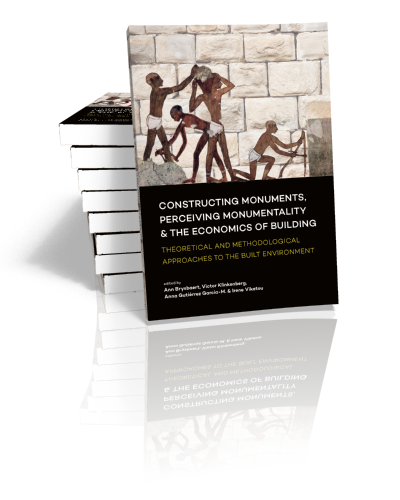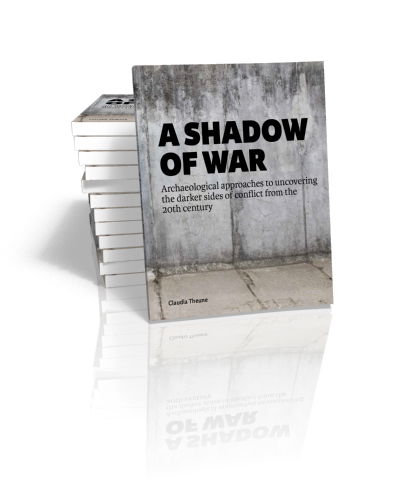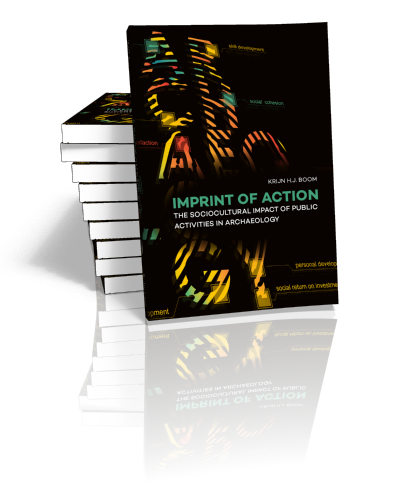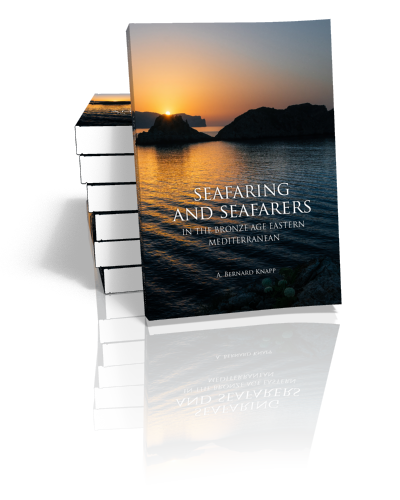Tracing Technoscapes
The Production of Bronze Age Wall Paintings in the Eastern Mediterranean
Edited by Johannes Becker, Johannes Jungfleisch & Constance von Rüden | 2018
Colourful surface treatments form an integral element of vernacular and élite architecture of ancient societies. This is also true for the various regions of the Eastern Mediterranean in the 2nd millennium B.C.E., where elaborate wall…
Constructing monuments, perceiving monumentality and the economics of building
Theoretical and methodological approaches to the built environment
Edited by Ann Brysbaert, Victor Klinkenberg, Anna Gutiérrez Garcia-M., Irene Vikatou | 2018
In many societies monuments are associated with dynamic socio-economic and political processes that these societies underwent and/or instrumentalised. Due to the often large human and other resources input involved in their construction and maintenance, such…
Océan, céramiques et îles dans l’ouest de la France
Approche archéométrique des relations paléo-économiques des populations insulaires du Néolithique à l’Antiquité
Benjamin Gehres | 2018
Ce livre est consacré à la recherche sur le développement de la production et des échanges céramiques entre le continent et les îles de Bretagne, du Néolithique à la période gallo-romaine. L’analyse archéométrique de la…
A Shadow of War
Archaeological approaches to uncovering the darker sides of conflict from the 20th century
Claudia Theune | 2018
This book presents archaeological research from places of war, violence, protest and oppression of the 20th and the 21st centuries; sites where the material relics give a deep insight to fateful events – a shadow…
Imprint of Action
The Sociocultural Impact of Public Activities in Archaeology
Krijn H.J. Boom | 2018
Cultural heritage, which includes archaeology, is recognized as serving an increasingly important role in European societal development. But what exactly is the relevance of archaeology to present day citizens? Imprint of Action investigates the sociocultural…
Transfer between sea and land
Maritime vessels for cultural exchanges in the Early Modern Period
Edited by Simone Kahlow | 2018
Questions about the cultural exchange of both knowledge and material goods are just as topical today as in years gone by. These questions have gained increasing attention from scholars since the 1980s when the term…
Seafaring and Seafarers in the Bronze Age Eastern Mediterranean
A. Bernard Knapp | 2018
Seafaring is a mode of travel, a way to traverse maritime space that enables not only the transport of goods and materials but also of people and ideas — communicating and sharing knowledge across the…
Search results for cat-method-theory
:
Tracing Technoscapes
The Production of Bronze Age Wall Paintings in the Eastern Mediterranean
Edited by Johannes Becker, Johannes Jungfleisch & Constance von Rüden | 2018
Colourful surface treatments form an integral element of vernacular and élite architecture of ancient societies. This is also true for the various regions of the Eastern Mediterranean in the 2nd millennium B.C.E., where elaborate wall…
Constructing monuments, perceiving monumentality and the economics of building
Theoretical and methodological approaches to the built environment
Edited by Ann Brysbaert, Victor Klinkenberg, Anna Gutiérrez Garcia-M., Irene Vikatou | 2018
In many societies monuments are associated with dynamic socio-economic and political processes that these societies underwent and/or instrumentalised. Due to the often large human and other resources input involved in their construction and maintenance, such…
Océan, céramiques et îles dans l’ouest de la France
Approche archéométrique des relations paléo-économiques des populations insulaires du Néolithique à l’Antiquité
Benjamin Gehres | 2018
Ce livre est consacré à la recherche sur le développement de la production et des échanges céramiques entre le continent et les îles de Bretagne, du Néolithique à la période gallo-romaine. L’analyse archéométrique de la…
A Shadow of War
Archaeological approaches to uncovering the darker sides of conflict from the 20th century
Claudia Theune | 2018
This book presents archaeological research from places of war, violence, protest and oppression of the 20th and the 21st centuries; sites where the material relics give a deep insight to fateful events – a shadow…
Imprint of Action
The Sociocultural Impact of Public Activities in Archaeology
Krijn H.J. Boom | 2018
Cultural heritage, which includes archaeology, is recognized as serving an increasingly important role in European societal development. But what exactly is the relevance of archaeology to present day citizens? Imprint of Action investigates the sociocultural…
Transfer between sea and land
Maritime vessels for cultural exchanges in the Early Modern Period
Edited by Simone Kahlow | 2018
Questions about the cultural exchange of both knowledge and material goods are just as topical today as in years gone by. These questions have gained increasing attention from scholars since the 1980s when the term…
Seafaring and Seafarers in the Bronze Age Eastern Mediterranean
A. Bernard Knapp | 2018
Seafaring is a mode of travel, a way to traverse maritime space that enables not only the transport of goods and materials but also of people and ideas — communicating and sharing knowledge across the…
Browse by subject



